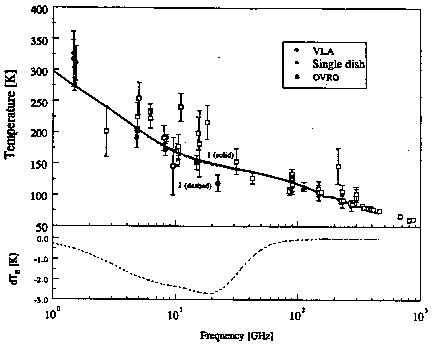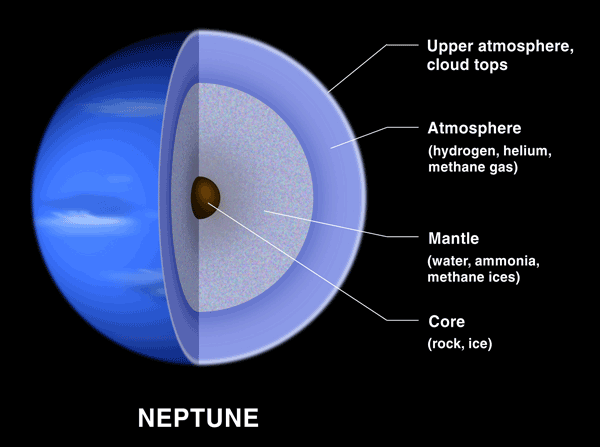|
Neptune Facts
Neptune is one of the gaseous planets in our solar system. While it is the smallest of the gas giants, its size and mass compared to the Earth is mind-boggling.
The mass of Neptune is ![FormBox[RowBox[{102.43, ×, 10^24, kg}], TraditionalForm]](/mathematica/HTMLFiles/index_1.gif) , about 17 times more massive than the Earth. It's volume covers , about 17 times more massive than the Earth. It's volume covers ![FormBox[RowBox[{6.254, ×, 10^13, km^3}], TraditionalForm]](/mathematica/HTMLFiles/index_2.gif) , 58 times that of the Earth. [1] , 58 times that of the Earth. [1]
The period of a Neptunian sidereal day is 16.11 hours, and it takes 60,189 days (or 165 years) to complete its orbit around the Sun. Due to the mass and the shortened day, as will be shown later in the report, a geostationary satellite around Neptune will be very far away, traveling very fast.
The shape of Neptune is not entirely spherical, but more like a partially-squashed rubber ball. It has an equatorial orbit of 24,767 km and a polar orbit of 24,341 km (see Figure 1), yielding an ellipticity of about 0.01708. This irregular shape will be important in calculating the orbit and trajectory of the relay satellite and probes.
![[Graphics:/mathematica/HTMLFiles/index_3.gif]](/mathematica/HTMLFiles/index_3.gif)
Figure 1: Polar and Equatorial Radii of Neptune
The minimum distance from the Earth to Neptune is ![FormBox[RowBox[{4.3, ×, 10^9, km}], TraditionalForm]](/mathematica/Supplement1/HTMLFiles/index_1.gif) and the maximum distance is and the maximum distance is ![FormBox[RowBox[{4.6, ×, 10^9, km}], TraditionalForm]](/mathematica/Supplement1/HTMLFiles/index_2.gif) . .
With any dish antenna pointing towards Neptune, a certain noise temperature will be felt at the receiver. Figure 2 shows the various frequency-dependant noise temperatures that will be seen by an antenna pointed at Neptune.

Figure 2: Noise Temperatures of Neptune at Various Frequencies [2]
As a gaseous planet, Neptune's atmosphere is very thick and very dense. However, Neptune does have a core; Figure 3 shows a cutaway sectional of Neptune's composition.

Figure 3: Neptune's Composition
Next Section »
References:
1. Neptune Fact Sheet (http://nssdc.gsfc.nasa.gov/planetary/factsheet/neptunefact.html)
2. ECE6390 Home Page (http://www.propagation.gatech.edu/ECE6390), Dr. Greg Durgin
|


